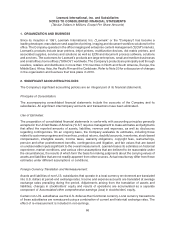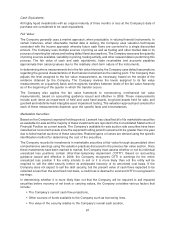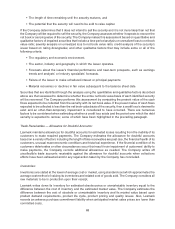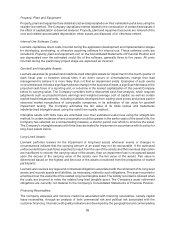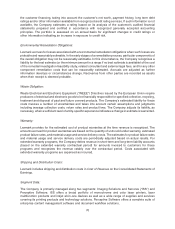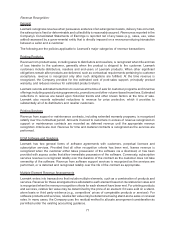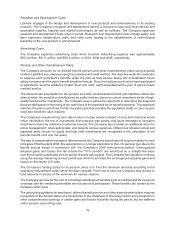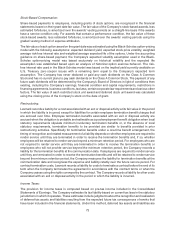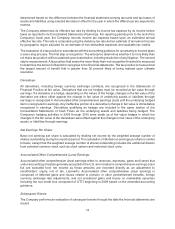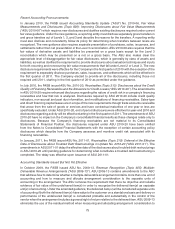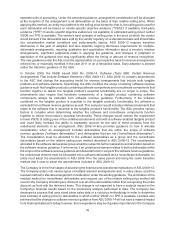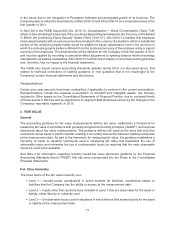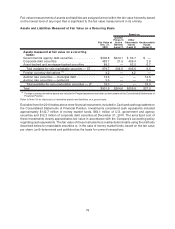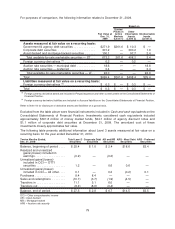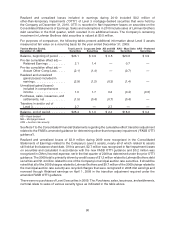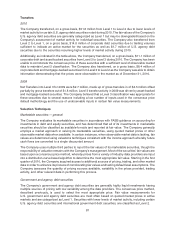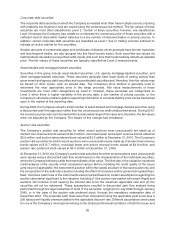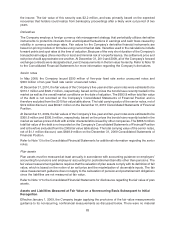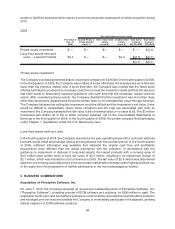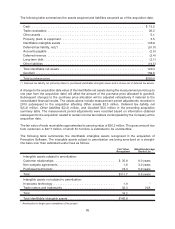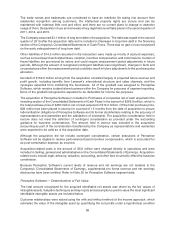Lexmark 2010 Annual Report Download - page 82
Download and view the complete annual report
Please find page 82 of the 2010 Lexmark annual report below. You can navigate through the pages in the report by either clicking on the pages listed below, or by using the keyword search tool below to find specific information within the annual report.separate units of accounting. Under the amended guidance, arrangement consideration will be allocated
at the inception of the arrangement to all deliverables on the basis of their relative selling price. When
applying this method, an entity must adhere to the selling price hierarchy; that is, the selling price used for
each deliverable will be based on vendor-specific objective evidence (“VSOE”) if available, third-party
evidence (“TPE”) if vendor-specific objective evidence is not available, or estimated selling price if neither
VSOE nor TPE is available. The vendor’s best estimate of selling price is the price at which the vendor
would transact if the deliverable were sold by the vendor regularly on a standalone basis and should take
into consideration market conditions and entity-specific factors. ASU 2009-13 requires transition
disclosures in the year of adoption and also expands ongoing disclosure requirements for multiple-
deliverable arrangements, requiring qualitative and quantitative information about a vendor’s revenue
arrangements, significant judgments made in applying the guidance, and changes in judgment or
application of the guidance that may significantly affect the timing or amount of revenue recognition.
The new guidance under the ASU must be applied either on a prospective basis to revenue arrangements
entered into or materially modified in the year 2011 or on a retroactive basis. Early adoption is allowed
under the transition guidance of the ASU.
In October 2009, the FASB issued ASU No. 2009-14, Software (Topic 985): Certain Revenue
Arrangements That Include Software Elements (“ASU 2009-14”). ASU 2009-14 contains amendments
to the ASC that change the accounting model for revenue arrangements that include both tangible
products and software elements. Specifically, the ASU modifies the scope of existing software revenue
guidance such that tangible products containing software components and nonsoftware components that
function together to deliver the tangible product’s essential functionality are no longer in scope. The
amendments also require that hardware components of a tangible product containing software
components always be excluded from software revenue guidance. Furthermore, if the software
contained on the tangible product is essential to the tangible product’s functionality, the software is
excluded from software revenue guidance as well. This exclusion would include undelivered elements that
relate to the software that is essential to the tangible product’s functionality. The ASU provides various
factors to consider when determining whether the software and nonsoftware components function
together to deliver the product’s essential functionality. These changes would remove the requirement
to have VSOE of selling price of the undelivered elements sold with a software-enabled tangible product
and could likely increase the ability to separately account for the sale of these products from the
undelivered elements in an arrangement. ASU 2009-14 also provides guidance on how to allocate
consideration when an arrangement includes deliverables that are within the scope of software
revenue guidance (“software deliverables”) and deliverables that are not (“nonsoftware deliverables”).
The consideration must be allocated to the software deliverables as a group and the nonsoftware
deliverables based on the relative selling price method described in ASU 2009-13. The consideration
allocated to the software deliverables group would be subject to further separation and allocation based on
the software revenue guidance. Furthermore, if an undelivered element relates to both a deliverable within
the scope of the software revenue guidance and deliverable not in scope of the software revenue guidance,
the undelivered element must be bifurcated into a software deliverable and a nonsoftware deliverable. An
entity must adopt the amendments in ASU 2009-14 in the same period and using the same transition
method that it uses to adopt the amendments included in ASU 2009-13.
The Company is in the final stages of assessing the financial and operational implications of ASU 2009-13.
The Company enters into various types of multiple-element arrangements and, in many cases, used the
residual method to allocate arrangement consideration under the existing guidance. The elimination of the
residual method for nonsoftware deliverables and required use of the relative selling price method will
result in the Company allocating any discount over all of the deliverables rather than recognizing the entire
discount up front with the delivered items. This change is not expected to have a material impact on the
Company’s financial results based on the preliminary analysis performed to date. The Company has
developed a process that uses stand alone sales data or a cost plus methodology in order to determine
best estimate of selling price for deliverables in which neither VSOE nor TPE is available. Lexmark also
believes that the changes to software revenue guidance from ASU 2009-14 will not have a material impact
to its financial statements today; however, the new guidance may be of greater importance to the Company
76


